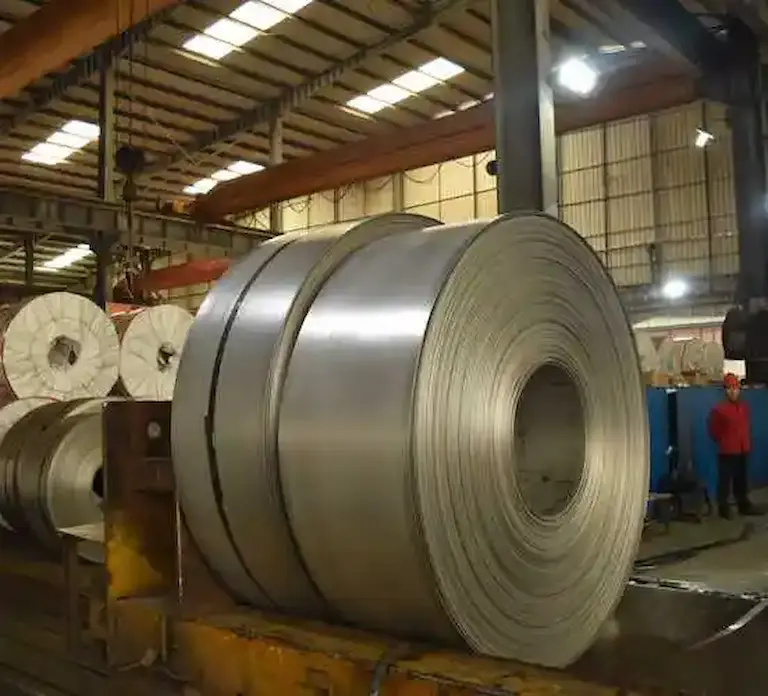A Complete Guide to J1 Stainless Steel

If you need to purchase J1 stainless steel tomorrow, how will you purchase it?
Some J1 ss purchasing companies will look for suppliers on the B2B platform; others may search for keywords such as “J1 stainless steel manufacturer” on Google to find suppliers. Maybe hire more than a dozen purchasing managers to complete your purchasing tasks? One or two buyers will think of going directly to the main producing area to set up a purchasing office to purchase the required J1 ss.
However, when the epidemic is spreading, your raw material needs are growing, but the information on the market is chaotic. Moreover, you cannot go to the stainless steel of J1 production work and directly inspect the factory.
Stainless steels are iron-based alloys. They are distinctive by a high corrosion resistance attributed to their chromium-nickel content. Aside, from that, a few other elements that make up stainless steel are Carbon (C), Chromium (Cr), Manganese (Mn), Nickel (Ni), Phosphorus (P), Silicon (Si), Sulphur (S).
These elemental compositions are made to vary to exhibit desired properties for different applications. Thus, this elemental variation creates different stainless steel grades. Any users need to understand how these grades work. An alphanumeric classification for respective grades usually represents these grades. Utilizing a thorough understanding of a steel’s properties is how we can maximize its potential. In that regard, this article will be discussing one particular grade, which is J1 Stainless Steel.
ASTM A240 Material: Applications and Classifications
What is J1 Stainless Steel?
J1 Stainless Steel is a low nickel variant of stainless steel. It is specifically chrome-manganese austenitic steel which has a relative amount of nitrogen. The nitrogen amount causes greater annealed strength in comparison to AISI- 304. Grade J1 is also referred to as “mid-copper,” representing its copper content with other J series stainless steel.
Why Does The Nickel Affect The Price of Stainless Steel?
What should you do to buy J1 stainless steel?
Many of your colleagues purchase J1 steel from YAOYI (such as sanitary ware, sink, pipe factory, etc.). Why did they choose yaoyi?
1.Myriad is a factory specializing in the production of J1 ss for 25 years. Rich production experience can provide you with high-quality stainless steel solutions.
2.Myriad takes product quality as the first principle. Be serious and responsible for your product’s raw material quality requirements.
3.We have a professional team of more than 50 people, who can give you professional cold-rolled stainless steel suggestions.
4.Myriadhas precision rolling mills that can precisely control thickness and width tolerances.
5.24/7 responsive service to ensure that we respond to your needs in a timely and accurate manner.
In this article, we will delve into all relevant information about the stainless steel of J1, including its origin, the difference between J1 ss and ordinary stainless steel, and its application.
Why Does Stainless Steel Rust?
How to Identify J1 Stainless Steel?
J1 stainless steel has distinct identification, which can only be classified through its properties. Generally, the J series has a unique stainless steel composition revolving around their carbon and copper content differences. Thus, we can clarify its distinction by comparing it to other J series stainless steel and its properties.
1. Internal Crystalline Structure
J1 ss has an austenitic internal structure. This structure is characterized by microscopic face-centered cubics known as austenites. Austenitic steels such as J1 cannot be hardened using heat treatment. This austenitic structure is the typical construct of chromium-nickel steels
2. Corrosion Resistance
J1 stainless steel is just as corrosion resistive as the rest of the other stainless steel grades. However, its copper content supplements the role for this property since grade J1 has lower nickel-chromium composition. Nickel-chromium content is the essential corrosion retardant element among stainless steels. By comparison, grade J1 has a corrosion resistance better than grade 430 stainless steel.
3. Physical Properties
J1 stainless steel has a density of 7.93 g/cm3. It is just around the lower end of the density range for most stainless steel. It is initially non-magnetic, non-corrosive, and heat resistant.
4. Mechanical Properties
J1 stainless steel has a yield strength of 205 MPa and tensile strength of 550 MPa. It also has an elongation per 2-inch gauge length of 40 minimum and a Rockwell hardness scale of 95 maximum.
Which Stainless Steel is Most Corrosion Resistant?
5. Chemical Properties
Grade J1 is categorized as a low nickel chrome-manganese austenitic stainless steel. Most of its properties lie between the interplay of carbon and copper content -a similarity among the J series. Below is the breakdown of the chemical properties of J1 ss:

Some of the vital chemical distinction of J1 stainless steel are as follows:
a. Lower Nickel Content
Grade J1 has a lower nickel content of 4-4.5%. This content is a drastic comparison to an average of 8-10% for other stainless steel. Nickel is the element that stabilizes the austenitic structure of stainless steel at room temperature. Lower nickel contents also entail lowering chromium contents for internal stability.
b. Nitrogen Addition
The minute amounts of Nitrogen cause better-annealed strength in comparison to other grades like AISI- 304.
c. Copper Content
There are also small amounts of copper of around 0.81%. This copper content helps increase corrosion resistance, mainly due to lower amounts of nickel and chromium J1 has. However, this element also relatively decreases workability in cold working or forming.
d. Manganese Content
Manganese is an element that improves a steel’s hot working properties, strength, toughness, and hardenability. It was initially used as a typical steel addition way back in the 1930s. Later on, metallurgists developed versions of low nickel grades around 1950, when nickel was rare.
Technically, the 200 and J1 series are the versions of this steel composition prototype. These are austenitic stainless steel grades characterized by high manganese but lower nickel-chromium contents. These steel types are also made as an alternative to the 300 series around World War II.
6. Weldability
J1 Stainless steel is highly weldable. Its weldability is comparable to grade 304, which is among the ideal austenitic grades for welding.
What Would Cause Stainless Steel To Rust?
J1 Stainless Steel Property In Comparison To Other J Grades
J series stainless steel is a particular grade of series characterized by the low amount of nickel and chromium. These said elements are the bread and butter of corrosion resistance for stainless steel. Therefore, copper is added to supplement its need for corrosion resistance. This copper content plays a significant role in the variations between the J series.
Another noticeable difference in the J series is its higher manganese content. Copper decreases workability, which is countered by the addition of manganese. Manganese improves the workability of stainless steel.
These occurrences in the internal construct of the J series ss are what further subdivides it into different variants. Below is the comparison of J series stainless steels with their respective properties. Starting from left (highest value) to the right (lowest value):
1. Carbon Content
J5 (0.135%) – J2 (0.128%) – J3 (0.127) – J1 (0.104%) – J4 (0.06%)
Carbon is directly proportional to the steel hardness, at the same time its brittleness. That is why metallurgists carefully regulate carbon content since it is the base element for steel strength.
2. Copper Content
J4 (1.57%) – J1 (0.81%) – J3 (0.59) – J2 (0.33%) – J5 (0.07)
As you can see, the J series carbon content is inversely proportional to its copper content.
Copper content correlates to corrosion resistance and work hardening rate. Copper is directly proportional to stainless steel’s corrosion resistance while inversely proportional to work hardening rate in cold working.
What Type of Stainless Steel is Magnetic?
3. Hardness and Strength
J5 – J2 – J3 – J1 – J4
It is noticeably similar to carbon content arrangement. As we’ve established, more carbon content means more steel strength. Although, in the case of the J series, high manganese also supplements steel strength.
4.Price
J4 – J1 – J3 – J2 – J5
This property correlates to the stainless steel’s copper content. Copper is quite a valuable metal which means more copper content means more monetary value.
The Difference Between Hot and Cold Rolled Stainless Steel
Where To Use J1 Stainless Steel?
The best applications for grade J1 stainless steel rely on the same properties that we elaborated on. In summary, it contains high copper content, which makes it less workable but corrosion-resistant. Next, it includes a lower carbon content which makes it a very bit at a disadvantage on strength and hardness. Finally, it is highly weldable.
Thus these properties make it useful for applications requiring corrosion resistance. However, there are better alternatives for structural applications, and it is a bit less formable. Below are the typical applications of J1 :
1. Minimum drawn applications such as decorative boards, sanitation tools, stainless steel sinks, etc.
2.Automotive trim and moldings
3.Roofing system including gutters, downspouts, roofing, and siding.
4.Kitchenware including utensils, dishwashers, range hood, sink, and other kitchen appliance components
5.Heat exchange and tubing
What are the Pros and Cons of Stainlesss Steel Wire?
Is J1 Stainless Steel Food Safe?
J1 ss has a non-corrosive property ideal for food safety. However, the extensive use of J1 stainless steel for food-related applications can be impractical in this modern age. There are plenty of better alternatives like 304 or 316, collectively referred to as “food grade.” Grade 304 and 316 also have very abundant supplies in the steel market.
Furthermore, a higher nickel-chromium composition still exhibits better corrosion-resistant properties. J1 can do the task, but there are more suitable grades for the work.
The Guide Of American Stainless Steel Tube Standard
Is J1 Stainless Steel Expensive?
J1 stainless steel is the second most expensive among the J series due to its copper content. However, compared to other steel grades, J1 is more economical due to its lower chromium-nickel content. It is also regarded that the J series are the most economical steel grade. However, it is worth noting that its price can still vary depending on market conditions, precisely, supply and demand.
How do you care of stainless steel?
Conclusion
Stainless steel can be a very complex subject for many manufacturers and metallurgists. However, It is a common public misconception that stainless steels are all just the same. As we have informed you, no one grade fits all applications. Specific grades are made to be applied for different requirements.
There are different grades with different properties that you can capitalize on with stainless steel. Upon learning this information, it is left upon your discretion to determine how to use it. Stainless steel grades can be a bit confusing, especially for the non-expert. Thus, we hope that this article has helped clarify your inquiries, particularly with grade J1 ss.
If you’re looking for a trustworthy stainless steel manufacturer or have further inquiries, feel free to contact us. Yaoyi takes pride in delivering only top-quality services and steel products.
How to Remove The Oxide Scale on The Surface of Stainless Steel Casting Billet?
References:
https://www.linkedin.com/pulse/collectionthe-most-complete-analysis-201-steel-grades-kary/
https://www.bmjmetal.com/product/stainless-steel-201-j1-mid-copper/
https://nickelinstitute.org/about-nickel/stainless-steel/the-nickel-advantage/
https://www.fda.gov/medical-devices/products-and-medical-procedures/metals-used-medical-devices
https://www.seriouseats.com/2019/01/buying-copper-cookware.html
